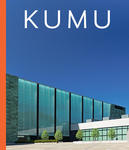
Kumu Art Museum
2019
108 lk
Sisukord:The story of the Art Museum of Estonia begins in 1919 when, with the birth of the new Republic of Estonia, the predecessor of the art museum, the Tallinn Estonian Museum, was established. The first home of the art museum was Kadriorg Palace, which housed art collections both before and after World War II. Even back then there were discussions of building a structure specifically for the state art museum.
The aim of the Kumu Art Museum, opened in 2006, is to preserve and interpret Estonian art from the 18th century to present times. Kumu views its role as being an initiator of a social and cultural debate both in connection with art historical expositions and events in the gallery of contemporary art, which has become an incubator for new ideas for domestic and foreign artists. Besides preservation, important tasks of the museum are to show the works of art in its collections, to initiate debates on their meaning and to shape various interpretative environments. In the fifteen years before Kumu was opened, people did not have constant access to the classics of Estonian art and the permanent display of Soviet art only became possible once Kumu opened. Our expositions need to speak to different audiences: to the well-versed and the relatively unknowing, the old and the young, local and foreign visitors, schoolchildren and their teachers, art lovers and art experts.
Now, the Art Museum of Estonia has evolved into an organisation that unites five distinct art museums: Kumu Art Museum, Kadriorg Art Museum, Mikkel Museum, Niguliste Museum and Adamson-Eric Museum
The aim of the Kumu Art Museum, opened in 2006, is to preserve and interpret Estonian art from the 18th century to present times. Kumu views its role as being an initiator of a social and cultural debate both in connection with art historical expositions and events in the gallery of contemporary art, which has become an incubator for new ideas for domestic and foreign artists. Besides preservation, important tasks of the museum are to show the works of art in its collections, to initiate debates on their meaning and to shape various interpretative environments. In the fifteen years before Kumu was opened, people did not have constant access to the classics of Estonian art and the permanent display of Soviet art only became possible once Kumu opened. Our expositions need to speak to different audiences: to the well-versed and the relatively unknowing, the old and the young, local and foreign visitors, schoolchildren and their teachers, art lovers and art experts.
Now, the Art Museum of Estonia has evolved into an organisation that unites five distinct art museums: Kumu Art Museum, Kadriorg Art Museum, Mikkel Museum, Niguliste Museum and Adamson-Eric Museum
Selle raamatu lisa info
Kapp:
Riiul:
Rida:
Riiul:
Rida:
Seisukord

